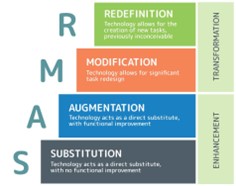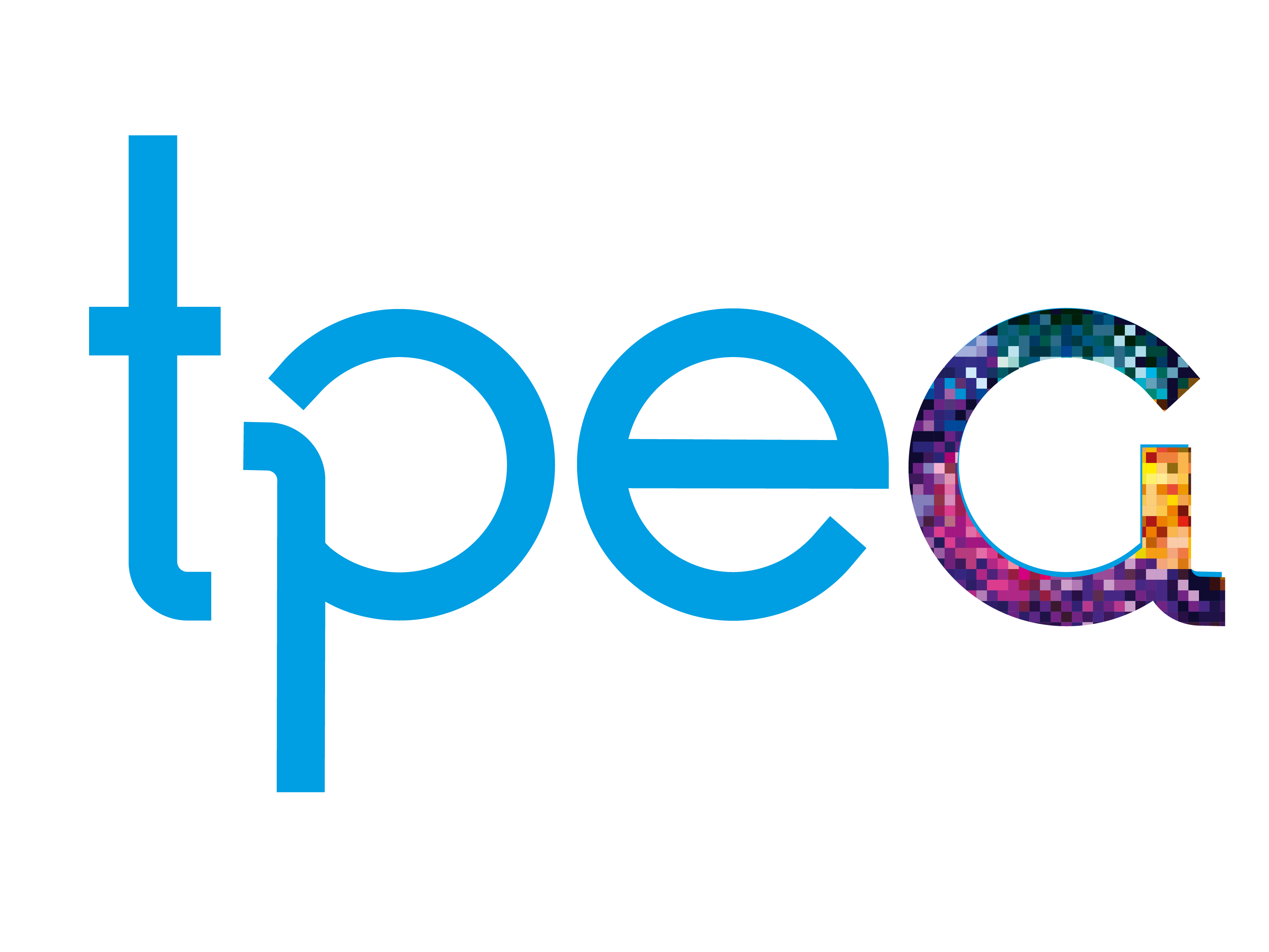Embedding social media in your teaching and learning: is the term TEL really a problem?

Dr Ryan Thomas Williams is an academic in the Business School at the University of Sunderland, and a Fellow of the Higher Education Academy. His research focuses on social media in education, and the policies and professional development pertaining to education technology. Recently, Ryan explored contemporary issues in internet ethics. Ryan teaches on the International MBA programmes, and supports the design and delivery of business, digital and research modules.
@WilliamsR_T
Introduction
My research career thus far has primarily involved social media in pedagogy, and my recently completed thesis explored whether social media can be incorporated into pedagogy successfully. I studied at Teesside University between 2018 and 2022.
My work was underpinned by Trowler’s (2008) socio-cultural theory and the research adopts a mixed methods approach. I applied a phase of online quantitative surveys that were analysed using descriptive statistics and two subsequent phases of interviews that were analysed thematically. I was able to recruit 434 secondary teachers with QTS to participate in the study. My results evidenced that there is little meaningful, transformative professional development in schools in respect of using social media for pedagogy (Kennedy 2005; 2014).
I argued that CPD in schools should focus on developing pedagogical strategies with technology as opposed to focusing on the technology in its own right. Furthermore, teachers’ reflections indicated that the differences between the social media platforms are profound; thus, grouping them together can become problematic. In other words, YouTube’s functionality is applied in an opposite way to Twitter’s and with different audiences.
Additionally, the study uncovered a lack of thought towards applying technology in education policymaking, and this became problematic for schools during the U.K. lockdown. The previous work’s major themes illuminated the challenges involved with successfully embedding technology in education, particularly social media.
There is longstanding tension within TEL, which is a consequence of the UK’s approach to teaching with technology. Technology is best used when transforming pedagogical tasks into multi-dimensional activities that were previously inconceivable without the technology. In this think-piece/blog, I attempt to argue that social media ought to be viewed as technology that can transform teaching and learning, in contrast to perhaps other forms of technology that may be viewed as simply substituting or enhancing tasks, in particularly iPads. One of the challenges is that the term TEL is too generalised and does not account for the profound distinctions between the different educational technology tools.
Important distinctions
Teachers face a conundrum when using TEL, despite the praise they may receive when classrooms are successfully ‘tech enabled’, they are additionally held responsible when technology fails to be embedded in pedagogy.
A model that is particularly relevant is Puentedura’s (2013) SAMR model which describes four possible levels of TEL. The first levels are ‘Substitution’ and ‘Augmentation’, these levels enhance the current teaching style and change what the teachers and students are engaged in. The following two levels are ‘Modification’ and ‘Redefinition’ which describe transformations in the classroom and allow teachers to complete tasks they were unable to do without the technology, such as Social Networking Services (SNS). 
Figure 1. Puentedura’s (2013) SAMR model
The SAMR model describes the application of technology to substitute and augment specific tasks. These are viewed as an ‘enhancement’ to a particular activity with limited tension, however, my research findings did evidence tension occurring at this stage. The simple substitution of a task that is subsequently completed using iPads is not revealing innovative pedagogy. My professional experience in education technology and software projects supports this notion and challenges Puentedura’s (2013) SAMR model and its key descriptors.
Whilst the SAMR model outlines the modification and redefinition of pedagogical tasks through technological transformative pedagogy with technology is nonetheless challenging. It is within this stage that teachers can benefit from technology by creating new tasks that were previously inconceivable.
Technology can present opportunities for educators to move from unidimensional to multidimensional and complex pedagogical tasks, however, it appears that the full potential of technology is not being realised (Yelland and Kilderry 2010).
Tasks that require learners to conduct problem-solving and complex activities without continuous prompts are referred to as multidimensional and may only be possible with technology (Yelland and Kilderry 2010). I argue that social media can allow for multidimensional tasks, yet overly generalising social media as a tool for teaching with other technology such as iPads, is generating tension in educational communities. Being an expert in using iPads is not the same as using social media effectively, and it can be argued that if schools and school leaders recognise the complications around generalising terms such as TEL, an increasingly productive pedagogical environment can be developed.
In other words, iPads are viewed as an enhancement whereas social media can be transformative. I argue that tension occurs during both stages, whereas Puentedura’s (2013) only comments on the transformative stages. This is becoming increasingly relevant as educators attempt to embed social media into pedagogy.
Why the term TEL is problematic
The complications of TEL and the dilemma that is presented upon educational institutes is long-standing (as in Ingleby, Wilford and Hedges 2019; Selwyn 2016). There are practical limitations that have been discussed with rigour across the body of literature, nevertheless, the general population have made considerable use of the digital age. Some technologies can increase inclusivity for learners and make content extensively accessible to ensure learning goes beyond the traditional ‘four walls of the classroom’ (Campbell 2015). Students require their learning experiences to be in a context closely related to the outside world i.e., with digital involvement. Therefore, teachers require prompt integration of advancements as with social media in their pedagogical strategies.
My research highlighted significant misunderstandings around what TEL is and the potential benefits it can deliver to a classroom. However, there was mutual agreement that some technologies such as iPads may not necessarily be useful for classroom pedagogy due to some tasks merely replicating what happens at present. Whereas Interactive Whiteboards (IWBs) and personal computers are essential for the teaching role in the 21st century, some of the teachers in my study reflected that they would not be able to successfully do their job if IWBs were ‘down’ for a day, yet they could manage comfortably without iPads.
Although most of the participants acknowledged the differences in the products, during discussions of ‘TEL’ and ‘technologies’, the reference point continuously defaulted to iPads which was interesting. As an example, when asked how teachers have used technology during lockdown, most gave an example of iPad usage then and now. This contradiction is part of the discourse in TEL, whereby iPads are not seen as particularly useful and yet they are embedded in the terminology and mindset for technology in education, and this is perhaps linked to policy or advocacy in this area by school leaders or various neoliberal governments.
Moreover, when exploring the teachers’ relationship with TEL and social media, it is worthwhile trying to understand positive and negative historical examples of technology in education. Looking back may acknowledge issues and factors that may only be revealed with hindsight. More predominantly, technology in forms such as non-numeric, and computer-assisted instruction were first explored in educational settings. Many technologies such as personal computers were first designed for teaching and learning, as well as research and administrative purposes (Selwyn 2016). IWBs do not have a purpose in the general population, however, they too have been successfully used across schools and contribute largely to teaching and learning.
Social media is paradoxical in this sense whereby the general population have been using these platforms for circa 15 years. The significance of a piece of technology or online platforms used by the general population before educational settings ought not to be underestimated. Personal preconceptions about social media have certainly influenced how they are being or in most cases not being used optimally in U.K schools at the secondary level.
With variations in the technology and software that is used across education, the term TEL may be seen as a generalisation that fails to fully distinguish the profound differences among them. TEL has become a shorthand for ‘learning technologies’, ‘EdTech’, ‘e-learning’, and ‘technology tools’, and my thesis evidenced that these terms are more commonly used than TEL. Grouping such distinctions results in teachers using iPads as reference points in discussions around social platforms. In other words, because iPads are viewed as not particularly useful, other technology advancements such as educational social media that is grouped under the identical term (TEL) struggle with disenfranchising from a preconception that includes little added value.
Interestingly, technology-enhanced learning does not describe what ‘learning’ actually is, evolving into another contentious point in the education literature. For example, is learning with technology an assimilation of ideas through practice and mastery with the facilitation of technology? Or does technology aim to transform teaching, learning and assessment through communication?
There are distinctions between using an iPad to complete word-based tasks that could have otherwise been completed using traditional materials such as pens and paper, and social media to expand the learning beyond the four walls through enhanced interaction, timeline and posts functionality, social worked based groups, and remote assessments. The Covid-19 pandemic and subsequent lockdowns highlighted the differences further. In this instance, the word-based task could still be completed on paper with technology merely facilitating the task. However, social platforms have allowed for task redesign, modification, and redefinition in potentially transformative ways.
Furthermore, the data from my research described teachers’ struggle with CPD in this area, and this is also linked to the confusion around the pedagogical benefits a platform may deliver. For example, without understanding how technology is linked to pedagogy, CPD in this area becomes idle and disengaging through administrative uses. By treating each piece of technology with individualism, regarding their features and functions, and linking them to specific technological pedagogical strategies, this is a more practical application of technology to pedagogy. This relates closely to Trowler’s (2008) socio-cultural theory and the notion that educators have complex interactions with resources and that these resources are essential for effective learning. Generalisations in this respect are irresponsible with regards to cultural, political, social and posthumanism complexities.
This is not to say that educators must learn how to teach with each type of technology. As technology moves forward quickly, this becomes likewise irresponsible, rather strong pedagogical strategies relating to TEL must be the focus, and in this way, educators are able to adapt to the technological changes that come their way.
I argue that some of this links back to CPD focusing on the administrative parts of new technology over the pedagogical benefits. When CPD evolves into a community of practice that further considers teachers and pedagogy, there will be a shift from administrative uses to transformative uses in pedagogy. Some schools evidenced this during the pandemic as they had adopted Google for Education’s solution. I also argue that when schools begin to distinguish differences between social media and other forms of technology, in other words, transforming compared with substituting tasks, scepticism around social media decreases.
References
- Campbell, C. (2015). ‘Breaking boundaries’ Teaching and Digital Technology: big Issues and Critical Questions. Cambridge, Cambridge University Press
- Ingleby, E., Wilford, B. and Hedges, C. (2019). ‘Teaching with technology and higher education: A brave new world?’, Practice: Contemporary Issues in Practitioner Education, 1(1) pp. 1.
- Kennedy, A. (2005). ‘Models of continuing professional development: A framework for analysis’, Journal of in-service education, 31(2), pp. 235-250.
- Kennedy, A. (2014). ‘Understanding continuing professional development: the need for theory to impact on policy and practice’, Professional development in education, 40(5), pp. 688-697.
- Puentedura, R. R. (2013). SAMR: Getting to transformation. (Accessed May 2019).
- Trowler, P. (2008). Cultures and change in higher education: Theories and practice. Basingstoke: Palgrave Macmillan.
- Selwyn, N. (2016). Education and technology: Key issues and debates. Bloomsbury Publishing.
- Yelland, N. and Kilderry, A. (2010). Becoming numerate with information and communications technologies in the twenty‐first century. International journal of early years education, 18(2), 91-106.







